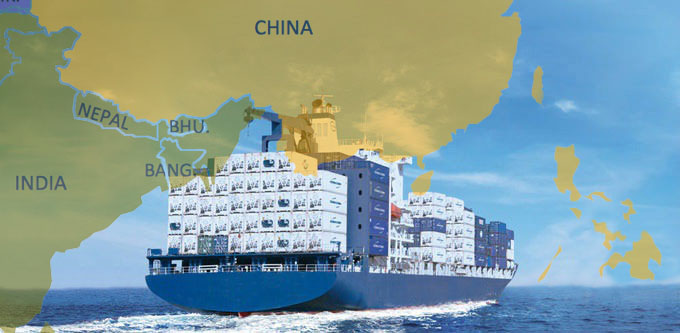Those who have plugged in Refrigerated Containers (a.k.a “reefers”) know firsthand that water intrusion can cause reefer plugs and connectors to explode. This is extremely dangerous and can result in injury to the operator, damage to the plug, receptacle, and surrounding equipment. And obviously, the refrigerated cargo is no longer being cooled. Experienced operators will even shake the plug prior to plugging in; if they suspect water is inside they know better than to energize the plug.
Read moreport terminal
Designing a Safe Reefer Connection: Part 2

Increasing safety
While little has changed in the construction of the receptacles themselves over the years, ESL is constantly challenged to find new solutions that meet unique customer safety and operational requirements. Usually terminal operators have limited or no control over the maintenance and standards associated with male plugs on reefer container cables, the quality of which varies considerably. A male plug with water and salt ingress can “flash” outwards into the operator when the interlock actuator is engaged. In order to energize a receptacle from a safe distance, ESL designed a rear-actuated receptacle that removes this safety risk by requiring the operator to engage the actuator rod from behind the assembly enclosure, out of the way in case of a flashover. Since the development of our rear-actuated receptacle, ESL has installed systems at terminals in Philadelphia, Nairobi and Vancouver. In Philadelphia, ESL added LED lights on the rear of the enclosures so operators can see they have energized the correct receptacle.
Damage control
Properly treated and maintained, a safety-interlocked reefer receptacle is designed to last many years. The reality, however, is that equipment is often damaged through misuse. In our experience, the number one cause of receptacle damage is “drive-offs”, where the reefer is moved without first being disconnected. This will destroy a nylon or plastic ROA, but not a stainless steel one. Stainless steel ROA’s can be repaired by just replacing the receptacle or swapping out a safety-interlocked outlet from another ROA. In North America, the incidence of drive-offs is such that stainless steel ROAs should be considered as an industry standard. ESL also offers microswitches in the receptacle that signals whether a container is connected, regardless of whether the reefer is energized or not. This information could be sent to the terminal operating system (TOS) and an instruction to move a reefer could be blocked if it is still connected.
If you missed part of our series focusing on operating reefers at terminals efficiently click here.
Introducing the New Q: ESL’s Latest Innovation
Safety, Value, Quality, and Innovation have played a key role in making ESL a worldwide industry leader in the design and manufacturing of safety-interlocked power outlets for refrigerated ISO containers. With this continuing mission in mind, ESL’s new Q module provides unparalleled safety and incorporates additional advances such as high visibility indicating light and extensive cycle testing for increased product reliability.
Watch ESL’s Q Module demo video to learn how we continuously stay ahead of product safety innovations.
Intermodal Infographic
ESL’s newest intermodal info-graphic highlights various reefer outlet assemblies (ROAs).. Learn about your options for powering refrigerated ISO containers.
Learn more about ESL’s capabilities and download standard specifications at: http://eslpwr.com/intermodal-reefer
Positive Expectations for Reefer Shipping

As projected at the beginning of 2016, this year is proving to be one of the worst for global container shipping, with one exception – reefer shipping.
In written clarifications by The Journal of Commerce, Container News, World Cargo News and Cleanleap, studies show cold chain has proved to be growing strong with frozen food shipments up 4% and chilled products up by 7%. The expectation being that the global refrigerated ocean transportation market will grow steadily from 2016 through 20201.
According to the latest edition of the Reefer Shipping Market Review and Forecast 2016/17, by 2020 seaborne reefer cargo will reach a staggering 120 million tonnes – increasing by an average of 2.5% per annum2. Such increases will have a direct effect on both container lines with reefer capacity and specialized reefer operators.
So where are these predictions coming from? One strong theme in reefer shipping performance is being attributed to the growing demand for food throughout Asia and rapid growth in meat imports into China3. China’s cold chain is now reported to be growing at 25% per year and projected to be worth $75 billion by 20174. In addition to the Asian market, Indian cold chain is also forecast to grow at 25% per year to 2017. This prediction is being accredited to popular fast food supply exports to India tripling over the last six years. Evidence shows the reefer shipping sector is also betting on growth in new and emerging economies, including Cuba. Trade organizations and industry groups have already conducted trade missions to Cuba in anticipation of the lifting of the U.S. trade embargo5.
…having reliable equipment when and where it’s needed is mandatory.
Emerging economies are not the only impact being taken into account, new business segments such as floriculture and pharmaceuticals are anticipated to continue to contribute greatly to the reefer shipping sector. Floriculture, or flower farming, is a $32 billion industry. It ranks as the third-largest U.S. crop, and growers in California make up 75% of the market. Pharmaceutical shippers are also looking more closely at ocean freight for their temperature-controlled shipments. The seasonal nature of floricultural and agricultural products combined with their short shelf lives mean having reliable equipment when and where it’s needed is mandatory. Despite the many current difficulties for the maritime sector, the predicted growth of reefer shipping has an encouraging outlook.
2http://container-news.com/perishable-reefer-trade-growth-remain-strong-drewry/
3””Reefer Cargo is Hot” World Cargo News Magazine, September 2016, pp. 17

